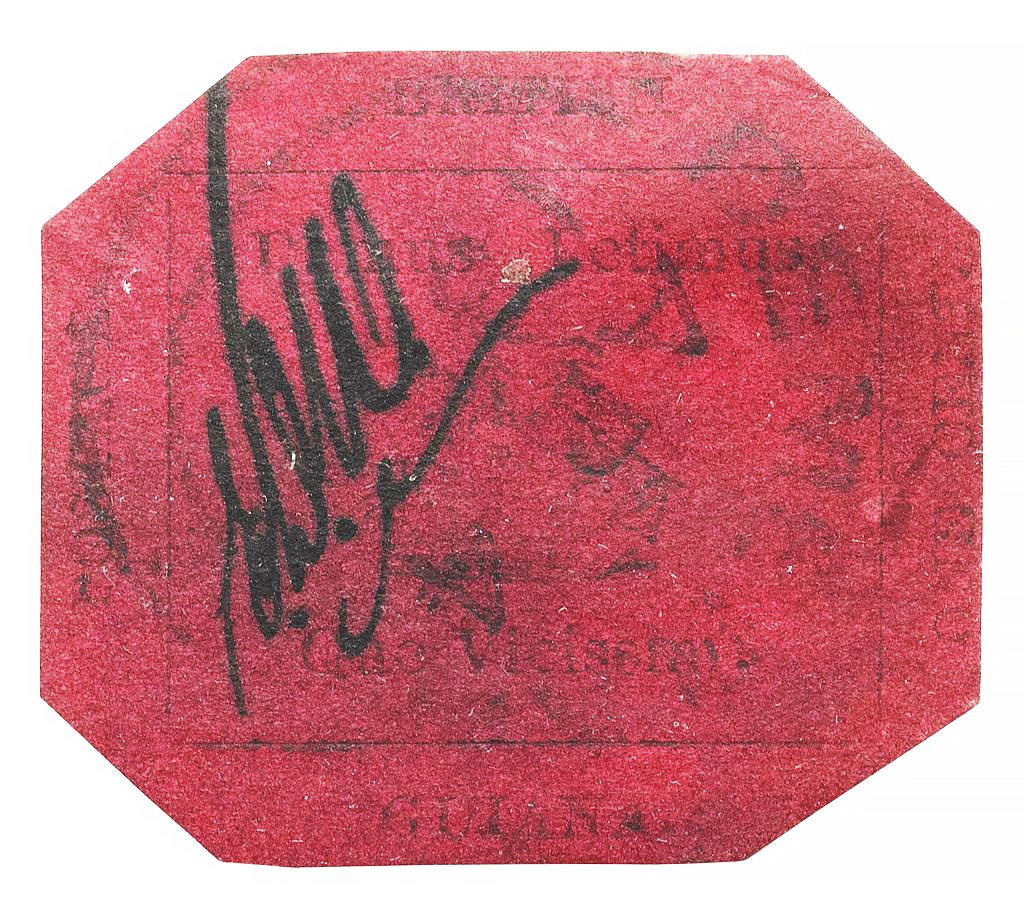The One and Only British Guiana 1c Magenta: Part I
Views : 6768

This old piece of red paper with cut corners is one of the most valuable stamps in the world - the British Guiana 1c Magenta issued in 1856. Its size is 27x30 mm, and it has the shape of an octagon. In 1856, this stamp was sold for as much as 1 cent, and in more than 100 years - for 280 thousand dollars.
History and Hypotheses
In February 1856, in one of the cities of British Guiana, a post office ran out of stamps and the delivery from London was delayed. The postal service employee received permission from the governor to issue a small batch of temporary stamps, which was then ordered from a local printing house. It is still not known whether both one-cent and four-cent stamps were issued or only the four-cent stamps. A hundred-year search was fruitless and it is not known whether other rare stamps with 1 cent value were issued. Three assumptions in terms of stamp’s origin were made:
1) the one-cent stamp was printed in a very small amount and only one piece is known to exist;
2) the stamp is a typographical error;
3) the stamp is fake.
The third assumption was dropped when in 1885, one famous expert declared that the stamp was authentic and then in 1891, Mr. Bacon gave a written guarantee of its authenticity. The second hypothesis was also rejected, since the stamps were manufactured under the control of officials. Moreover, the possibility of a mechanical misprint is excluded. Thus, the most probable cause was the assumption that the one-cent stamp was printed in small quantities (100-200 pieces). Experts suggest that only one stamp has been found because the stamps were made without gum and they were torn off at the opening of the letter.
Description
In the center of the stamp, there is an image of a sailing ship, which served as a vignette for one of the sections in a local newspaper. A group of researchers found that the ship on the stamp is called Sandbach. It traveled between the islands of the West Indies and brought copra, tobacco, and sugar to the metropolis. Above the image, there is a motto printed with an error - "Damus petimus que vicissim" (“petimusque” should be written in one word). The ship and font are painted black on crimson red paper. In the upper left corner, you can see an inscription by hand, saying "EDW" - these are the initials of the post office clerk (it was also he who decided to cut off the four corners for unknown reasons). The cancellation mark is smudged, but it has been identified that it says "DEMERARA, AR. 4, 1856".
Read about the British Guiana's owners (teaser: dealers, syndicate, a convicted murderer, famous shoe designer) in Part II.